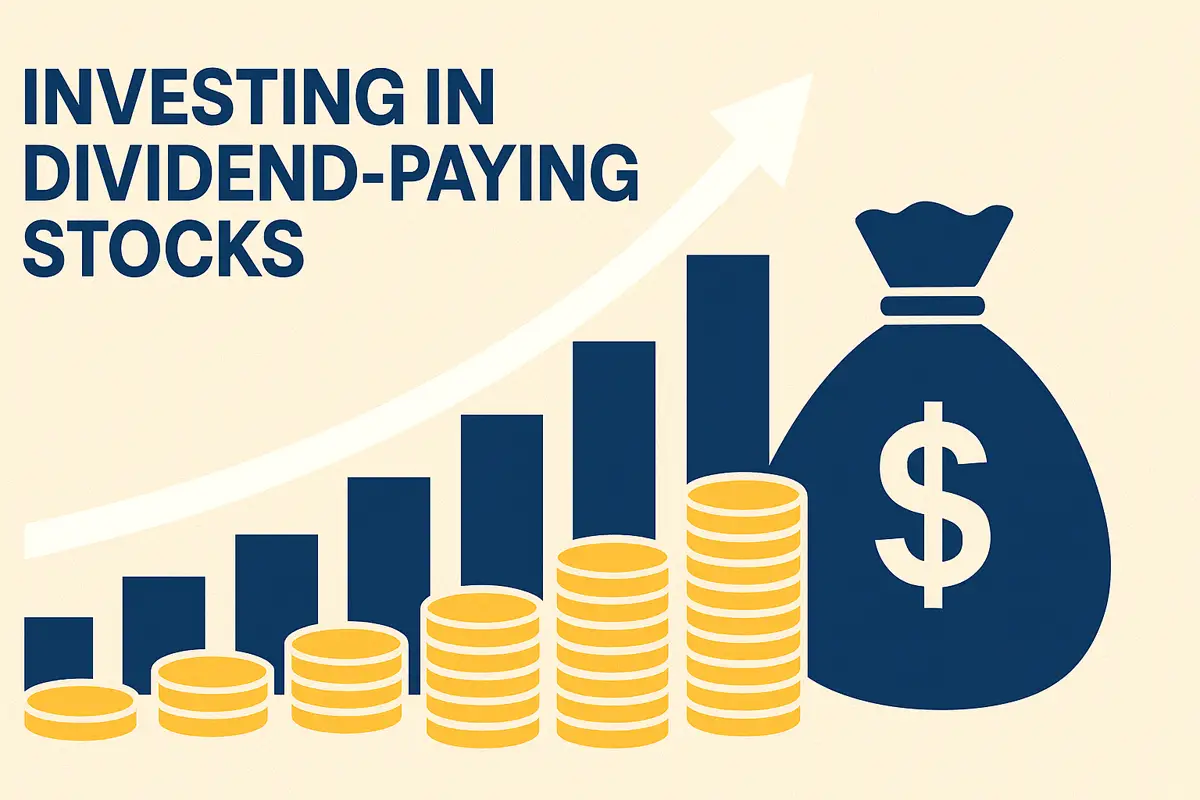Building a Winning High-Dividend Stock Portfolio: A Comprehensive Investment Guide

Developing a winning portfolio of high-dividend stocks requires a clear understanding of why investing in dividends is attractive and sustainable. The high dividend stocks represent shares of companies that make a habit of distributing a huge percentage of their earnings to shareholders in terms of dividend payments. These companies tend to have established business models, low-volatility cash flows, and management teams that are committed to rewarding shareholders with consistent dividends.
● Dividend Investment Strategy
The appeal of dividend investing lies beyond generating mere periodic income. High-dividend stocks are generally a hedge against market volatility because payments of dividends have a tendency to moderate portfolio performance during market declines. Firms which have maintained uninterrupted payment of dividends over long time periods tend to be fiscally and operationally conservative and are therefore good investment opportunities for the long term.
When starting your dividend portfolio journey, it is important to understand that dividend investing is all about compounding returns and patience. The best dividend investors are concerned with creating portfolios that can provide increasing income streams in the future, not with pursuing the highest yields possible without regard to sustainability.
● Setting Your Investment Objectives and Risk Capacity
Before selecting individual high-dividend stocks, you need to know your goals and tolerance for risk. Every investor has his/her income needs in the near term or growth goals for the long term, and these should guide your portfolio construction method. Maximum income at the current time is desired by some investors, while others care about long-term growth in dividends.
Your age and horizon significantly influence the selection of an appropriate dividend strategy. Younger investors will often prefer dividend growth stocks which start off with low yields but increase distributions on a regular basis in the longer term. Older investors often require higher current yields to meet immediate income needs, yet some element of growth must still be preserved for protection against inflation.
● Risk and Sustainability
Risk tolerance also applies in constructing dividend portfolios. Conservative investors will most often go for large companies with excellent payment track records of dividends, even if there is relatively low-yielding money available at present. Daring investors will include more highly paying prospects with greater risk but more earning ability.
Successful yield stock choice is based on thorough research and investigation beyond the simple listing of top-paying options available. Dividend sustainability is the greatest factor. To be considered, as non-sustainable. Yields tend to breed dividend cuts having a dramatic impact on both income and capital value.
Financial health assessment forms the foundation of dividend stock analysis. Companies that have healthy balance sheets, prudent debt-to-equity levels, and consistent cash flow generation abilities are well-positioned to sustain and grow their dividend payments in the long term. Free cash flow analysis is used to determine whether companies can generate adequate cash to support dividend payments while maintaining or increasing required business investments.
● Dividend Analysis Fundamentals
Dividend history provides valuable insights into management commitment to shareholder returns. Companies with consistent dividend payment records, particularly those that have maintained or increased payments during economic challenges, often demonstrate the stability that dividend investors seek. However, past performance doesn’t guarantee future results, making ongoing financial analysis essential.
Payout ratio analysis helps in assessing the sustainability of dividends by comparing dividend payments to earnings by firms. Reasonable payout ratios typically indicate that firms keep sufficient earnings for reinvestment in business while providing decent shareholder returns. Extremely high payout ratios may be a signal of potential dividend sustainability problems.
● Diversification Strategies for Dividend Portfolios
Effective diversification is a fundamental building block of creating solid portfolios of high-dividend stocks. Sector diversification works to reduce concentration risk while gaining exposure to different economic cycles and business fundamentals. Various sectors possess distinct dividend profiles, ranging from the steady yields of utility operators to growth opportunities presented by technology dividend payers.
Geographic diversification is feasible to enhance portfolio stability as well as provide exposure to different currencies and economic environments. Global high-dividend stocks are prone to provide favourable yields and access to markets that have different growth patterns and regulatory environments. This geographic diversification can smooth aggregate portfolio performance across different economic cycles.
● Size Diversification Benefits
Company size diversification within your dividend portfolio can harmonize stability with growth potential. Big blue-chip firms are likely to provide stable dividend payments with relatively low growth levels, while small dividend-paying firms are likely to provide higher growth potential with relatively higher risk profiles. Having a combination of firm sizes can optimize the risk-return profiles in your dividend portfolio.
Market capitalization balance will also affect dividend portfolio performance. Dividend stocks with large capitalization tend to reflect stability and liquidity, and opportunities for mid-cap tend to reflect greater growth potential. Small-cap dividend payers have more possibilities for higher yields but usually incorporate greater volatility and liquidity issues.
● Building Your Core Dividend Holdings
Creating a strong building block for your dividend portfolio requires careful identification of the fundamental holdings that are capable of producing consistent income generation over the long term. The balance positions should be companies possessing strong business models, long-term sustainable competitive advantages, and management teams committed to sustainable dividend policies.
Consumer staples are another set of potential core holdings because these companies produce necessary goods that maintain demand no matter what the economy does. Food processors, consumer product companies, and other consumer staples are likely to show the steadiness that income investors want, though growth rates will be modest.
Healthcare companies can provide attractive dividend yields with excellent growth opportunities better than traditional defensive sectors. Pharmaceutical companies with diversified product pipelines and medical device companies balance good yields with acceptable growth opportunities and suit well for core holdings in a dividend portfolio.
Conclusion
Performance measurement needs to consider both income generation and total return perspectives. The dividend yield is still valid, but effective dividend investing also considers potential capital appreciation and aggregate risk-adjusted returns. This integrated method of assessment guarantees that your dividend portfolio continues to meet your investment objectives over the long term
Building a winning portfolio of high-dividend-paying stocks requires careful planning, sound research, and disciplined implementation. By focusing on sustainable dividend opportunities, maintaining proper diversification, and actively managing your portfolio, you can build an investment strategy that offers strong income and produces long-term wealth through the power of returns compounding.
Disclaimer:
The information provided in this article is for general informational purposes only and does not constitute financial, investment, legal, or tax advice. Readers should not rely solely on the content herein when making investment decisions. All investments carry risk, including the potential loss of capital, and past performance is not indicative of future results. You are strongly advised to conduct your own research or consult with a qualified financial advisor or investment professional before making any investment decisions. The author and publisher accept no liability for any direct, indirect, or consequential loss arising from the use of or reliance on the information contained in this article.










